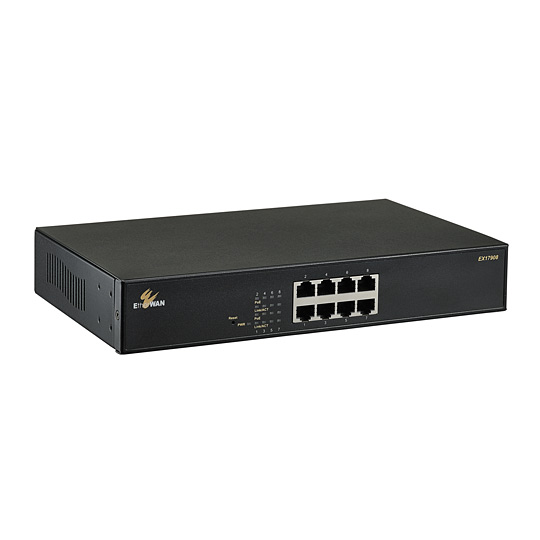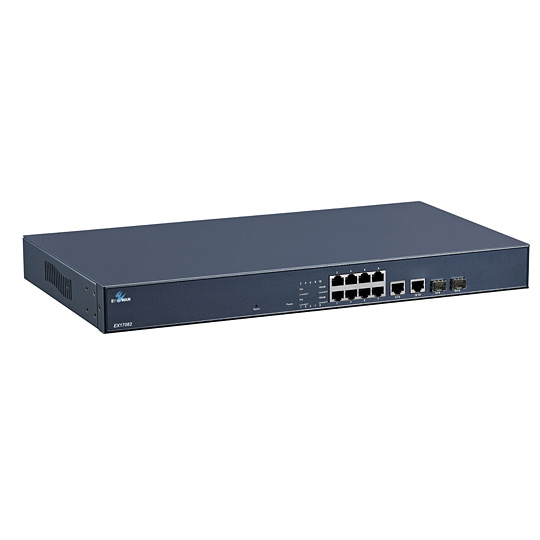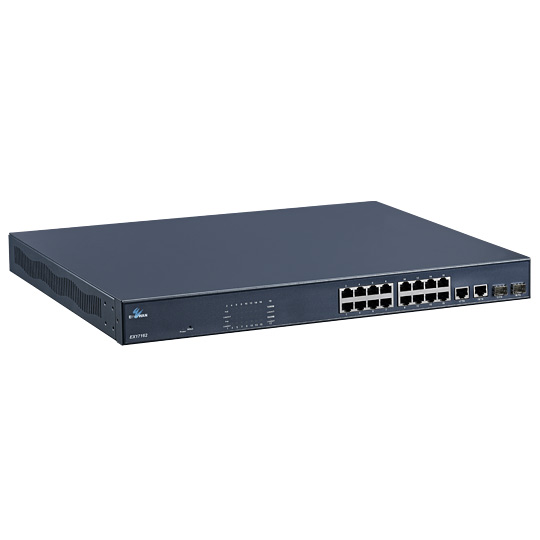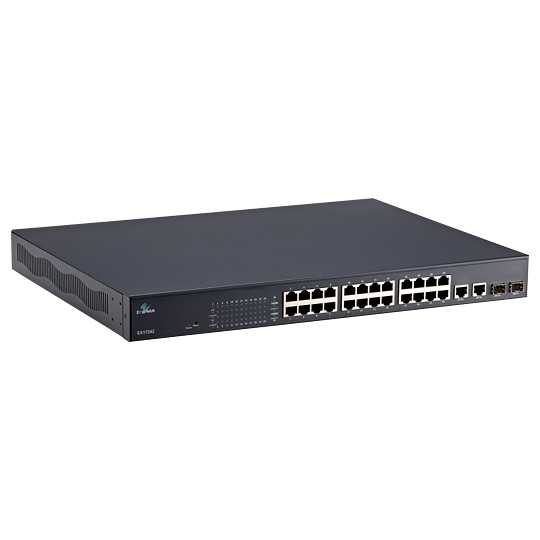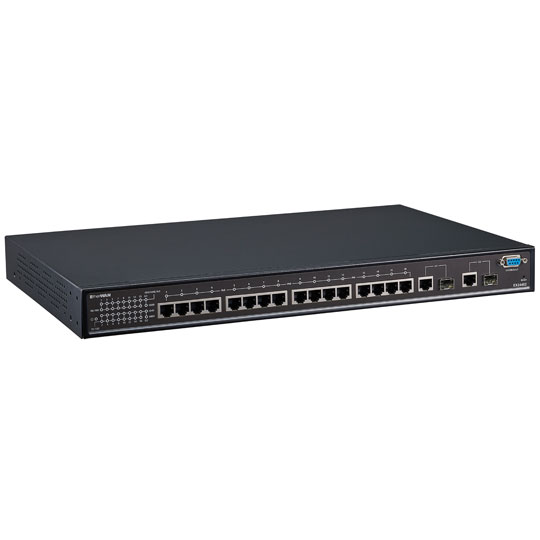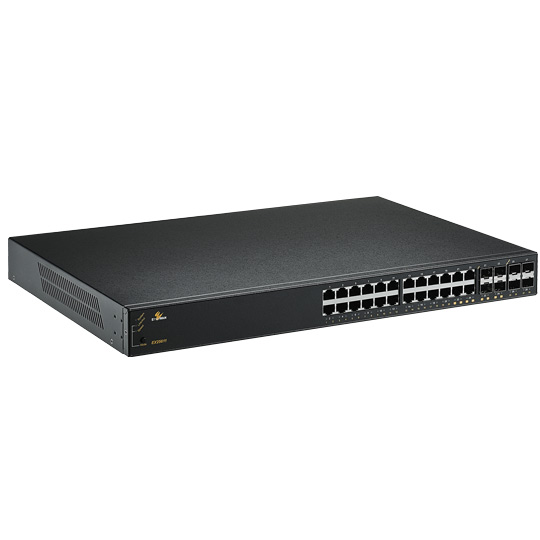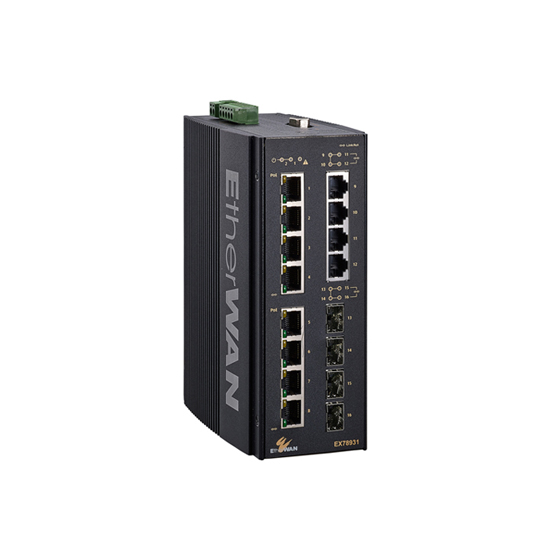Creating Stable Ethernet Transmission for IP Surveillance in Retail Chain Stores

Enhanced Retail Management via IP Surveillance
Large retail stores are crowded with shoppers every day. However, this has also brought about problems of retail shrinkage and criminal activities that demand video surveillance to be in place.
To achieve better retail chain management and a superior shopping experience, a robust IP surveillance system plays a central role. However, the system can only deliver its best performance with stable IP transmission.
Taipei, Taiwan — January 18, 2016
Boosting IP Surveillance With Robust Transmission
To effectively manage a large-scale retail chain, adopting a fully integrated IP surveillance system is typically the best choice for end-users due to its lower total cost of ownership (TCO) and enhanced management efficiency. Ensuring stable IP transmission and a reliable power supply is imperative to maintain the continuous operation of the IP surveillance system, especially when connecting numerous chain shops. Therefore, it is highly recommended to use IP transmission devices in conjunction with Power over Ethernet (PoE) technology.
Furthermore, these transmission devices can empower end-clients to make informed business decisions and improve retail chain management. For instance, a PoE switch can be connected to a POS machine for sales record analysis or integrated with sensors to intelligently control building lighting.
In cases requiring long-distance transmission, Ethernet extenders or fiber optics are commonly employed. Fiber optic cables offer significantly greater transmission distances, enhanced security, and reduced noise/interference. They are often deployed in large areas such as warehouses, serving as the backbone connecting to the main control room.
Optimizing Connectivity With PoE
The use of PoE enables system integrators (SIs) to easily set up surveillance cameras without concerns about power distribution. PoE is a technology developed by the Institute of Electrical and Electronics Engineers (IEEE), delivering power through a CAT5 cable.
Most modern IP cameras support the IEEE802.3at PoE Powered Device (PD) standard. An IEEE802.3at Power Sourcing Equipment (PSE), such as a PoE switch, can output a maximum of 30W per port. Regular bullet cameras typically consume under 10W. However, PoE cameras with features like Pan-Tilt-Zoom (PTZ) or infrared illumination may require significantly more power.
For outdoor retailers, such as those in gardening, video cameras must remain operational in harsh conditions. If PoE cameras with heaters and wireless AP connections are installed outdoors, it may be necessary to use hardened 60W PoE switches to provide sufficient power and stable transmission.
To support these power-hungry cameras, some network connectivity equipment manufacturers have developed "Ultra PoE" products that can deliver up to 60W from each PoE port, utilizing all four pairs of copper wires in the UTP cable.
Enhanced Gigabit Network Transmission
Gigabit Ethernet transmission can be carried by Gigabit CAT5/6 cables or fiber optic cables. In a large retail chain store, such as a supermarket, many devices are connected to the network, including CCTV, access control, POS, payment, lighting, and even air conditioning systems. These devices will generate heavy data feeds, especially among the video cameras installed at the corners of stock shelves. It takes massive bandwidth to collect all this data; a Gigabit backbone is the best choice.
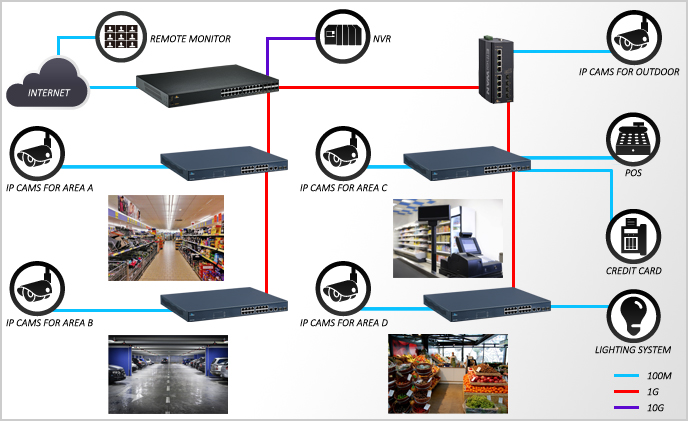
Web Smart PoE Switches
The implementation of web smart PoE switches in a retail chain surveillance project will greatly simplify maintenance. Compared to unmanaged switches, web smart PoE switches offer a cost-effective solution that reduces maintenance time and minimizes operational downtime, making them increasingly popular among Systems Integrators (SIs).
Web-smart PoE switches provide a user-friendly web interface that allows network administrators to remotely adjust settings via a web browser. These settings include PoE status, port on/off, VLAN tagging, trunking, QoS priority, remote rebooting, and more. VLAN (Virtual Local Area Network) and QoS (Quality of Service) configurations are critical for optimizing the streaming performance of large-scale IP video distributions.
Reducing Total Cost
Deploying Ethernet transmission in an IP surveillance project can help reduce the Total Cost of Ownership (TCO) for the following reasons:
- Using PoE switches as Power Sourcing Equipment (PSE) simplifies the power distribution when installing surveillance cameras. PoE installation, being low voltage, doesn't require certified power technicians.
- Network devices can be seamlessly integrated into the existing IT infrastructure.
- Fiber optic ports can be connected to fiber infrastructure for high-performance, long-distance data transmission.
- Web-smart PoE switches are cost-effective and support remote monitoring and Ethernet port configuration, reducing troubleshooting time and on-site inspections.
- Web-smart switches can configure VLAN and QoS settings to optimize video streaming.
- Some managed PoE switches offer PoE scheduling functions, which can be applied to PoE cameras or LED lighting for energy conservation.
- Managed PoE switches with redundant power inputs can be connected to Uninterruptible Power Supplies (UPS) for backup power. During power outages in remote locations, the network administrator can disable unnecessary ports, ensuring power for critical surveillance cameras.
- A well-designed IP surveillance system effectively deters vandalism and reduces retail shrinkage.
- The IP video surveillance system can be integrated into the IoT infrastructure for enhanced business analysis.
Finding a Value-Added Partner
When implementing a network design, PoE power budget, port numbers, VLAN segmentations, and bandwidth settings are crucial factors that must be configured correctly. A partner who not only offers quality products but also provides technical support and consultancy can save a Systems Integrator (SI) time and money.
For instance, EtherWAN Systems, Inc. specializes in designing and manufacturing Ethernet switches, media converters, Ethernet extenders, and PoE products for applications where connectivity is critical. With their core focus on Ethernet connectivity in extreme environments with stringent requirements, product reliability and quality are their top priorities. Technical support and topology consultations are also available from EtherWAN.
Related products:
► News released @ASMAG: http://www.asmag.com/showpost/19874.aspx
